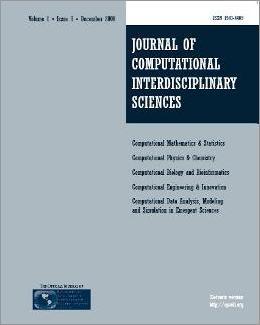
Editorial Office:
Management:
R. S. Oyarzabal
Technical Support:
D. H. Diaz
M. A. Gomez
W. Abrahão
G. Oliveira
Publisher by Knobook Pub


Editorial Office:
Management:
R. S. Oyarzabal
Technical Support:
D. H. Diaz
M. A. Gomez
W. Abrahão
G. Oliveira
Publisher by Knobook Pub
doi: 10.6062/jcis.2011.02.01.0035(Free PDF)
Renata S.R. Ruiz, Haroldo F. Campos Velho, César A. Caretta, Andrea S. Charão and Roberto P. Souto
A recent proposal, addressing the organization and evolution of large-scale structures in the Universe, suggests a similarity between cosmological evolution and the dynamics of a turbulent fluid. In this work, we present some optimization procedures for extending the analyses of turbulent signatures in the gravitational potential energy spectrum of dark matter haloes of galaxies at different redshifts. These include the development of a parallel version of the Friends-of-Friends algorithm, for identifying the dark matter haloes, and the implementation of a grid environment. Our data are from the N-body simulations run by the Virgo Consortium. The spectra for different redshifts are computed as independent tasks, therefore, we can use parallelization and a grid environment. We employed the OurGrid middleware in such grid experiment. Here we present the first results demonstrating the feasibility of implementing a computational grid for Astrophysics in Brazil. The obtained results fully corroborate the previously found turbulent-like signatures.
computational data analysis and simulation in general sciences, grid computing, parallel friends-of-friends, turbulence and cosmology.
[1] DE CARVALHO RR et al. 2009. The Brazilian Virtual Observatory - A New Paradigm for Astronomy. Journal of Computational Interdisciplinary Sciences 1(2): 1-23.
[2] FOSTER I. 2003. The grid: A new infrastructure for 21st century science. Physics Today, 55: 51-63.
[3] FOSTER I & KESSELMAN C. 2004. The grid: Blueprint for a new computing infrastructure. Morgan Kaufmann, San Francisco, USA, 2nd edition.
[4] JENKINS A et al. 1998. Evolution of Structure in Cold Dark Matter Universe. The Astrophysical Journal, 499: 20-40.
[5] SHANDARIN SF & ZELDOVICH Y. 1989. The large-scale of the universe: Turbulence, intermittency, structures in a self-gravitating medium. Reviews of Modern Physics, 61: 185-220.
[6] MADSEN M. 1996. The dynamic Cosmos - Exploring the physical evolution of the Universe. Chapman & Hall, New York, 1st edition.
[7] LINDER EV. 1997. First Principles of Cosmology, Addison-Wesley.
[8] TATEKAWA T. 2005. Lagrangian perturbation theory in Newtonian cosmology, arXiv:astro-ph/0412025v4.
[9] HAWLEY JF & HOLCOMB KA. 2005. Foundations of Modern Cosmology. Oxford University Press, Oxford New York, 2nd edition.
[10] CARETTA CA et al. 2008. Evidence of turbulence-like universality on the formation of galaxy-sized dark matter haloes. Astronomy and Astrophysics, 487: 445-451.
[11] FRISH U. 1995. Turbulence: The legacy of A.N. Kolmogorov. Cambridge University Press, New York.
[12] EINASTO J, KLYPIN AA, SAAR E & SHANDARIN SF. 1984. Structure of Superclusters and Supercluster Formation - III. Quantitative Study of the Local Supercluster Mon. Not. R. Astr. Soc., 206: 529-558.
[13] HUCHRA JP & GELLER MJ. 1982. Groups of galaxies I. Nearby groups. The Astrophysical Journal, 257: 423-437.
[14] ANDRADE WN et al. 2003. Ourgrid: An approach to easily assemble grids with equitable resource sharing. In Proceedings of the 9th Workshop on Job Scheduling Strategies for Parallel Processing, Seattle, WA, USA.
[15] FLYNN MJ. 1966. Very High-Speed Computing Systems. Proceedings of the IEEE, 54: 1901-1909.
[16] PACHECO PS. 1997. Parallel Programming with MPI. Morgan Kaufmann Publishers, Inc., San Francisco.
[17] CHAPMAN B, JOST G & DER PAS RV. 2007. Using OpenMP: Portable Shared